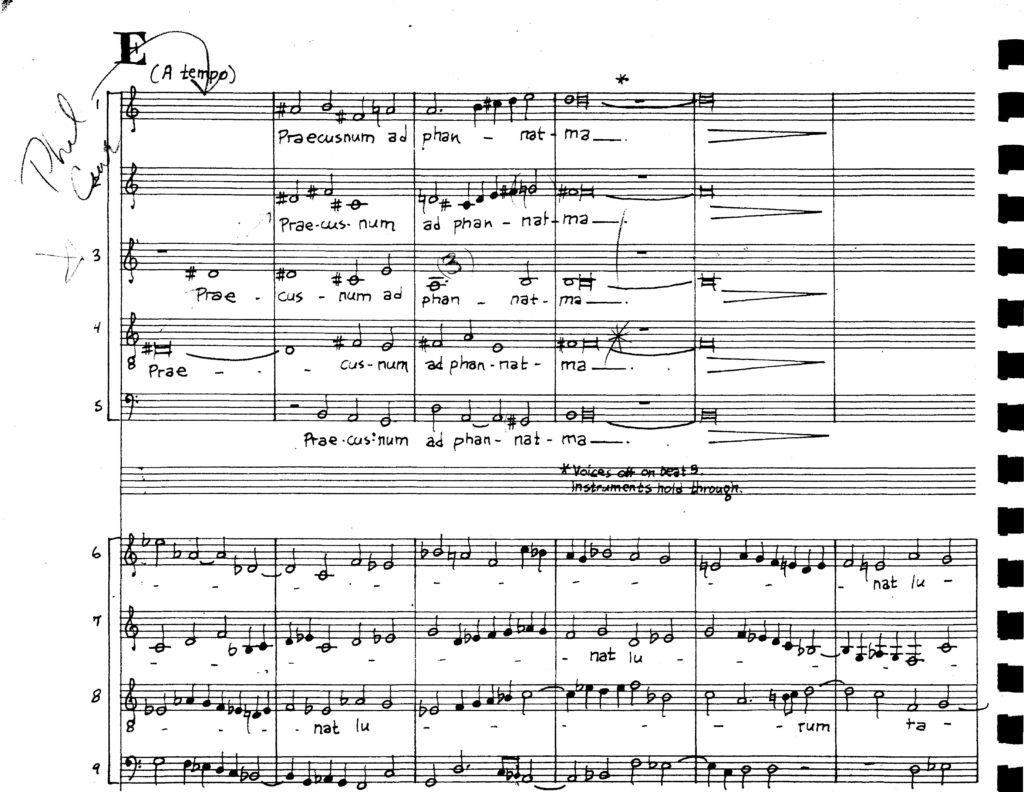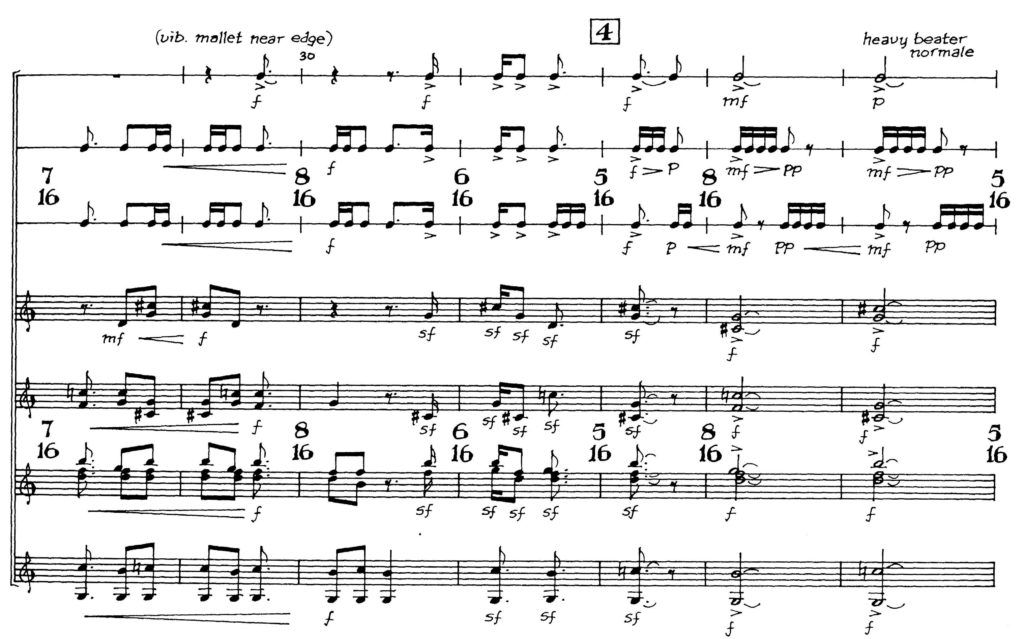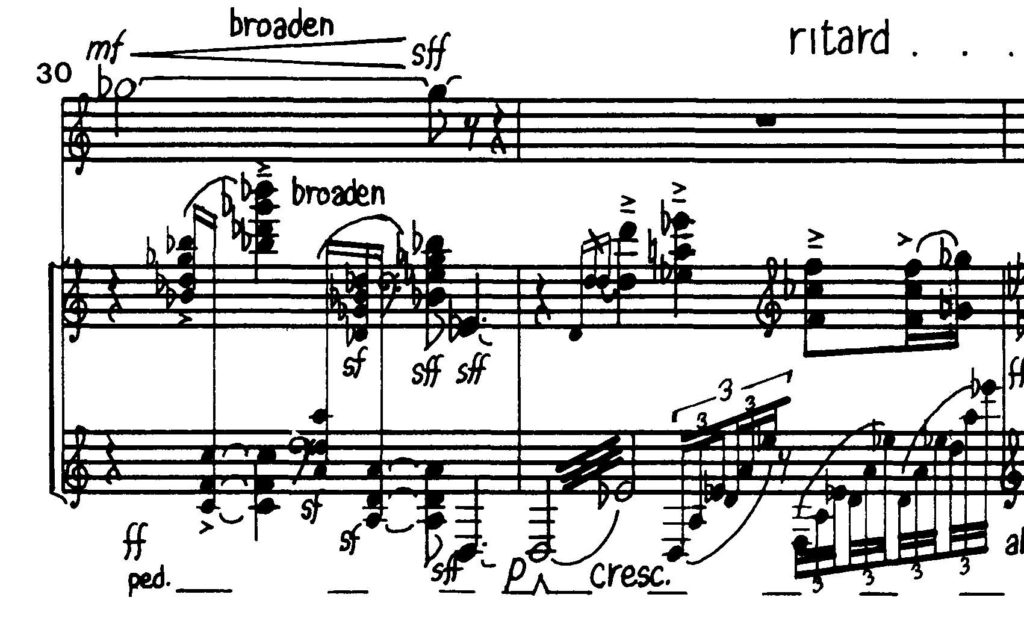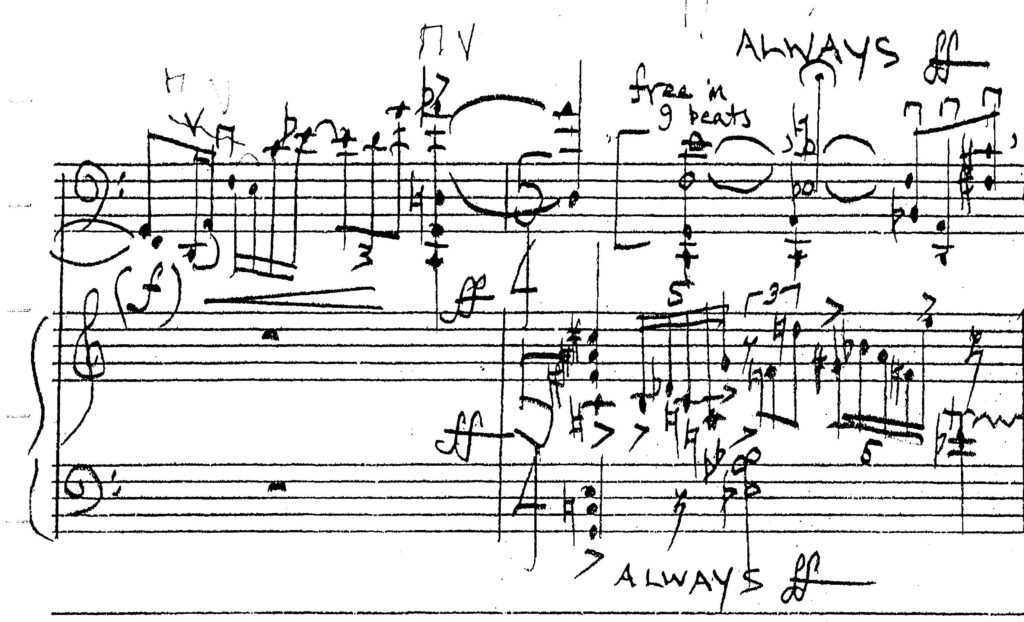When I was at the University of Washington, there were about two dozen composition majors, both grad and undergrad. With the eight members of the composition faculty, we would meet for an hour once a week after lunch on Fridays in the recital hall (now called Brechemin Auditorium) for Composers Forum, at which two or three student works would be performed and discussed. I was the person primarily responsible, at least during my last couple years at UW, for lining up performers, and rehearsing and conducting the pieces for the Friday meetings, as well as for our periodic composers concerts. It was possible to put together fairly large ensembles, such as for my Polter te creso, a piece for 14-part chorus with 14 doubling instruments and three conductors:
The players were generally other music students (lots of good ones at the School of Music), and they wouldn’t hesitate to let us know if the parts we gave them were illegible or inaccurate. Sometimes I had to mediate between the players and the composers. Our teachers emphasized how important it was to check carefully for mistakes before we handed out the music. When you’re having to copy out each individual part from the full score by hand, it can be very easy to get some notes wrong or, even more disastrously, to leave out a measure here and there, forget to put in a time signature change or tempo marking, transpose a clarinet part incorrectly, get the rehearsal letter in the wrong place, slip into treble-clef thinking while copying an alto-clef part, and so on. We were told again and again how much it cost to rehearse and perform a piece with professional musicians, and that we risked getting our music thrown out if too much time was spent correcting mistakes. (I saw that happen to one of my friends: just fifteen minutes in to a rehearsal with a professional chamber orchestra, a great opportunity for him, the mistakes just kept piling up, and the conductor finally had to say, “That’s it. We’re done.”)
Each composer’s notation was a reflection of his or her personality, and often of the music itself, whether rigorous or rhapsodic. I remember one guy whose notes were simply thin diagonal lines. It looked elegant and precise, but you often had a hard time telling whether the note was on a line or a space. George Crumb was in his heyday in the early 1970s, and we couldn’t help being seduced by the visual beauty of his large-format, meticulously hand-drawn scores, with their invented notations for extended techniques, the quirky shapes of their clefs and other standard symbols. That certainly appealed to me, but I put more effort into developing a consistent notational style, modeled as closely as possible on the shapes of musical symbols in high quality printed music—that put out by Boosey and Hawkes, for example. My composition teacher, Bob Suderburg, impressed with the clarity and accuracy of my notation, hired me to prepare the parts for several of his pieces, including a big percussion concerto for Mickey Bookspan and the Philadelphia Orchestra. Later on, he had me do several other pieces for publication by Presser, including his Chamber Music VII: Ritual Series for Percussion Ensemble:
Bob’s own notation was quite clean, and most of his published scores were simply holographs, that is, reproductions of his originals. Here’s an example from his Chamber Music VII: Ceremonies for Trumpet and Piano:
The composers in Suderburg’s generation typically drew their own scores for publication, using either pencil or ink. Some had access to a music typewriter (which never produced very satisfactory results), others might employ sheets of press-on symbols to get more consistency. These days, of course, it’s rare to encounter a hand-drawn score. When you do, though, if the music is good, you can almost feel the pressure of the creator’s hand on the page as a palpable thing, the music coming alive in the strokes of the pencil. I had that sensation just recently when I performed Elliott Schwartz’s Prelude, Memorial, and Aria for cello and piano. The notation, while quite beautiful simply as a drawing, is not always easy to read, but it’s energetic, invigorating, bursting with Elliott’s exuberant musical personality. Here’s an excerpt:
NEXT TIME: More reflections on notating music by hand, including working for the legendary Arnold Arnstein in New York in the 1970s and early 1980s.




